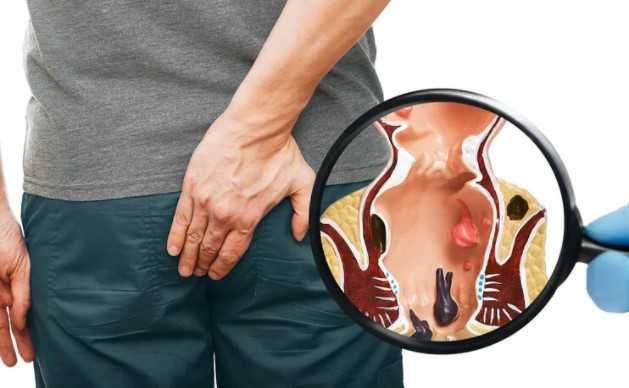Piles Doctor in PCMC
What is Piles Surgery?
 Hemorrhoids, also known as piles, are enlarged vessels in the lower rectum and anus that resemble varicose veins. There are numerous reasons of hemorrhoid’s, though frequently the cause is not recognized.
Hemorrhoids, also known as piles, are enlarged vessels in the lower rectum and anus that resemble varicose veins. There are numerous reasons of hemorrhoid’s, though frequently the cause is not recognized.
They might be the outcome of exertion during bowel motions or from pregnancy-related increased pressure on these veins. Hemorrhoids can form under the epidermis around the anus or inside the rectum (internal hemorrhoid’s) (external hemorrhoids).
Hemorrhoids are extremely typical. Approximately three out of every four people will experience hemorrhoid’s occasionally. They can sometimes go unnoticed while other times they can cause bleeding, irritation, and pain.
On rare occasions, a thrombus can develop in a hemorrhage (thrombosed hemorrhoid). Although they are not harmful, they can be very excruciating and occasionally need to be lanced and emptied.
Hemorrhoids can be effectively treated with a variety of methods, which is fortunate. Many individuals can experience symptom alleviation with at-home remedies and lifestyle modifications. Professor of piles at PCMC.
In the anal region, piles are inflamed, distended masses of tissue. They come in a variety of forms and can be either internal or exterior.
The more typical variety of piles are internal piles, which are typically found 2 to 4 millimeters above the anus’ opening. On the outer border of the anus, there are external mounds.
Piles Signs & Symptoms
The majority of piles (hemorrhoids) instances are minor, and the symptoms frequently go away by themselves after a few days.
Given that they don’t experience signs, some individuals might not even be aware they have hemorrhoids.
However, when signs do materialize, they might comprise:
- haemorrhaging after a bowel movement (the blood will be bright red).
- itching in your genital area (the opening where stools leave the body).
- if there is a mass protruding from the anus that may need to be forced back in after using the toilet.
- In the mucous that is expelled after a bowel movement.
- Your anus may be painful, red, and swollen from pleasure.
Unless their blood flow is reduced or blocked, hemorrhoid’s typically do not hurt.
Diagnosis
Usually, an expert can identify piles after performing a physical check. The individual with probable haemorrhoids will have their anus examined. An inspection of your rectum and anal canal may be required as part of tests and procedures to identify internal haemorrhoids:
These are possible inquiries from the doctor:
Any family relations who suffer from piles?
Have the stools contained any blood or mucus?
Has there been any weight reduction recently?
Have your bowel motions lately changed?
The stools color?
Causes
Your anus’s veins can enlarge or protrude as a result of strain on them. Hemorrhoids) can form as a result of greater strain in the lower rectum caused by:
- struggling to go to the bathroom
- Spending extended amounts of time on the bathroom
- persistent defecation or indigestion
- Fat
- Fifth, pregnancy
- Anal sexual activity
- Fiber-poor diet
Because the muscles that support the veins in your rectum and anus can deteriorate and expand with age, haemorrhoids are more likely to occur.
digital inspection. When a digital rectal exam, your doctor injects a protected, greased finger into your rectum. The patient examines their body for any abnormalities, such as growths. The practitioner can advise on whether additional research is necessary.
visual assessment. Your doctor may also use an anoscope, proctoscope, or sigmoidoscope to check the lower part of the colon and the rectum because interior haemorrhoids are frequently too soft to be felt during a rectal exam.
If signs and symptoms indicate you may have another digestive system condition, such as colorectal cancer, are middle-aged, and haven’t had a recent colonoscopy, the doctor may want to check the complete colon using a colonoscopy.
Treatments
Changes in lifestyle
To manage piles, a doctor will originally advise making some dietary changes.
- Diet: Stretching during stool motions can result in piles. Constipation is the cause of excessive effort. Altering your food can maintain your stools soft and regular. This entails consuming more fiber-rich foods, such as fruits and veggies, breakfast cereals based on bran, and drinking more water. Preferably, stay away from coffee.
- Bodyweight – Shedding pounds may help reduce piles’ regularity and intensity. Additionally, suggest moving and preventing struggling to release stools in order to prevent piles. One of the primary treatments for haemorrhoids is exercise.
Medications
- Drugs available over-the-counter (OTC) These can be purchased offline or online. Painkillers, ointments, creams, and patches are examples of medications that can assist with anus redness and edoema.
- Corticosteroids: These can lessen discomfort and irritation.
Laxatives: If an individual with piles is sick, the doctor may recommend specific treatments. These may facilitate stool passage and ease strain on the lower intestines. At 7 orange hospital we have best Piles Doctor in PCMC in our panel.
Surgical options
One in ten piles sufferers will eventually need treatment.
- Hemorrhoidectomy: This procedure involves medically removing the extra tissue that is causing the haemorrhaging. A spinal anaesthesia, a general anaesthetic, or a mix of local anaesthetic and sedation may be used to accomplish this. The most effective procedure for fully eliminating piles is this one, but there is a chance of having trouble passing stools and getting urinary tract infections.
- Hemorrhoid stapling: Blood supply to the hemorrhagic tissue is cut off. Hemorrhoidectomy typically causes more discomfort than this procedure. Rectal prolapse, in which a portion of the rectum pulls out of the anus, and haemorrhoid recurrence are two conditions that this technique can increase.
Get proper consultancy and treatment at 7 Orange hospital from Piles Doctor in PCMC.
